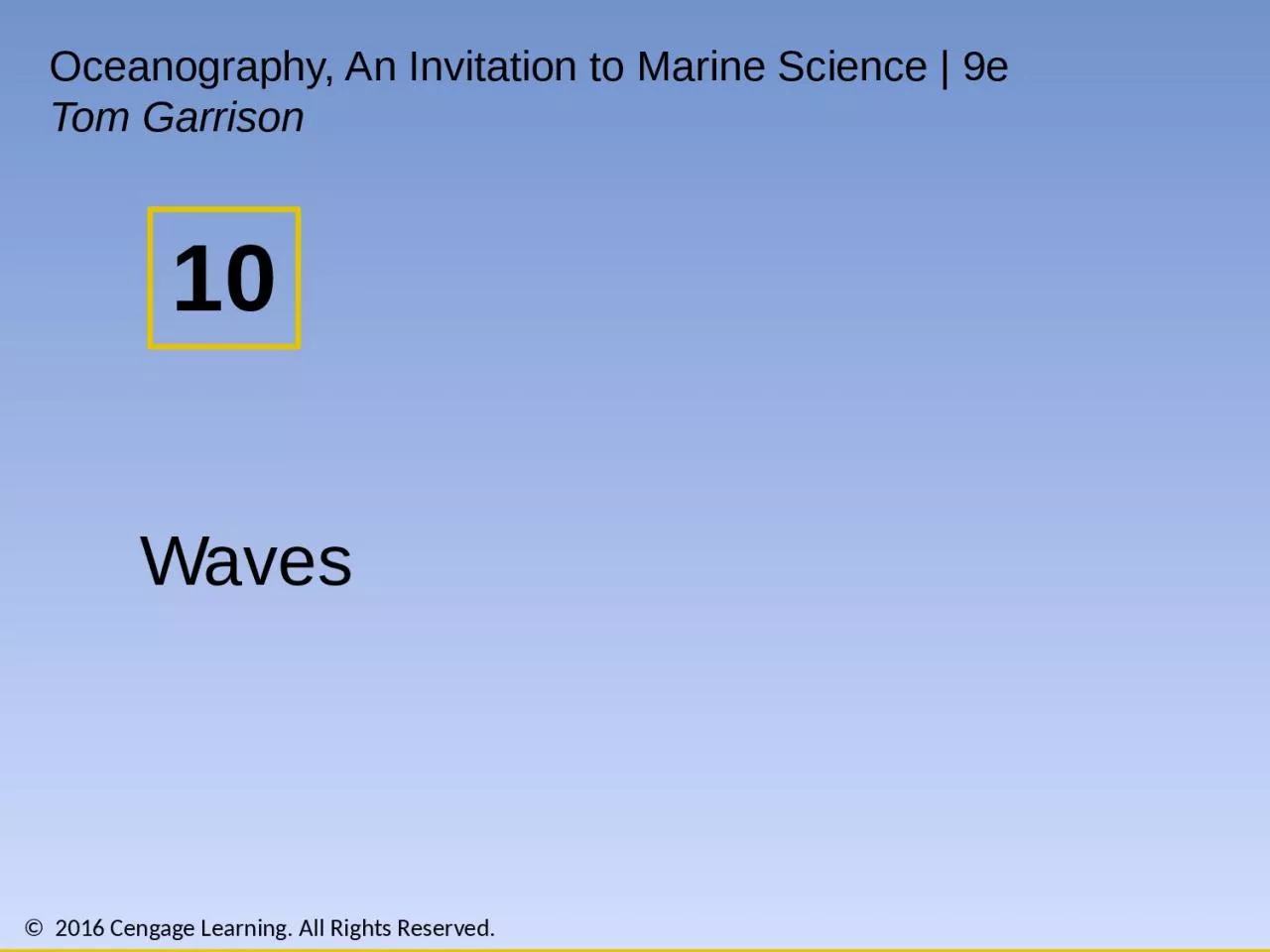

Energy is moving not water orbital motion energy is transferred via circular motions water and gull return to original position the wave form moves forward Motion decreases with depth At a depth of ½ of the wavelength the motion is not significant ID: 1025080
Download Presentation The PPT/PDF document "Waves Water Waves Waves disturbances cau..." is the property of its rightful owner. Permission is granted to download and print the materials on this web site for personal, non-commercial use only, and to display it on your personal computer provided you do not modify the materials and that you retain all copyright notices contained in the materials. By downloading content from our website, you accept the terms of this agreement.
1. Waves
2. Water WavesWavesdisturbances caused by the movement of energyEnergy is moving, not waterorbital motionenergy is transferred via circular motionswater (and gull) return to original positionthe wave form moves forward
3. Motion decreases with depthAt a depth of ½ of the wavelength, the motion is not significant.
4. Disturbing force – energy sourceRestoring force – flattens water surfaceWavelength – most useful measure of wave sizeWater depthshallowdeepFree vsForcedWave Classification
5. Deep-water wavesdepth greater than ½ wavelengthnot touching bottomwind waves in the open oceanShallow-water wavesdepth less than ½ wavelengthtouching bottom – cannot have full stack of orbiting circleswind waves approaching the shorevery large wavestsunamistidesWave Classification – water depth
6. wind energy transferred to watercapillary waves form from frictionadditional energy transforms to larger gravity wavesmaximum height is 1/7 wavlengthSea – mixed waves of all sizesSwell – waves become sorted by sizeWind waves
7. Progress of Waves – the wave trainLead wave disturbs the waterAs the train moves forwardthe lead wave form dies outnew wave appears at back of train“Wave train” advances individual waves form, move to front, then die out
8. Factors affect growth of wind wavesWind strengthWind durationFetch – area over which the wind blowsWind Wave Formation
9. Global Average Wind Wave Height
10. Destructive interferencecrest in trough cancel each otherConstructive interferencewhen crests and troughs aligndeeper and higher wavesrogue waveinterference creates a huge wavetemporary violation of 1/7 limitTemporary effectwave trains move onWave Interference
11. Waves Approach the ShoreTransition from deep water waves with circular orbits to shallow water waves with flattened orbits
12. Waves Approach the Shore
13. Wave Refraction and DiffractionRefraction: waves bend toward the shallow waterDiffraction: waves interfere with each other after bending when passing an island
14. Storm Surgebulge of water (not a wave)short term rise of sea leveltravels with stormresults fromconstant wind pushing water toward shorelow pressure under storm allowing water to rise
15. Rocking wave in a confined basin Wavelength is 2x the width of the basinNot an ocean wavebayslakesCausesstrong, sustained wind earthquakesSeicheSeiche in Lake Erie (2003)
16. Caused by rapid displacement of waterlandslidefault movementLong-wavelength – 75 to 125 milesalways shallow-water waves (ocean is 2 miles deep)always touching bottom – no room for full stack of orbital motionHeightshort on open ocean (1 to 3 feet)dramatically increases at shore 3 to 30 feet is commonup to 100 feet in some placesFast400 to 600 miles per hour in the open ocean50 to 70 miles per hour as they approach the shorecan cross the Pacific Ocean in 12 hoursTsunami
17. The Japanese Tsunami of 2011
18. The Japanese Tsunami of 2011 (cont’d.)